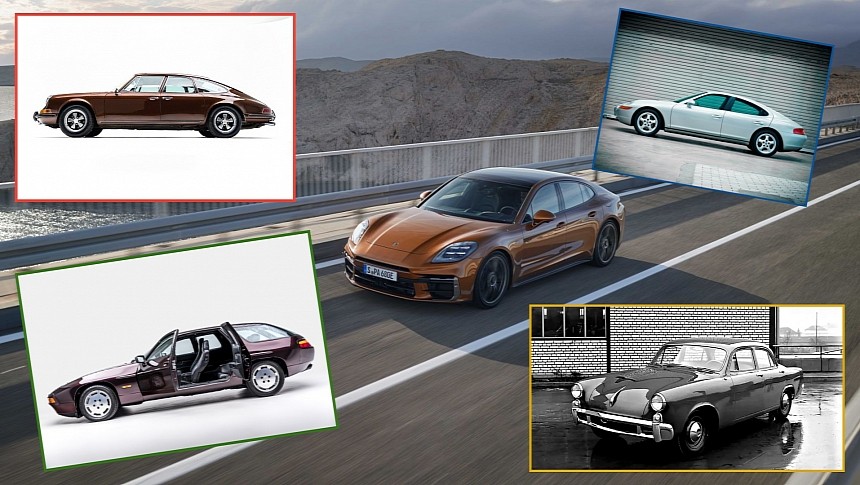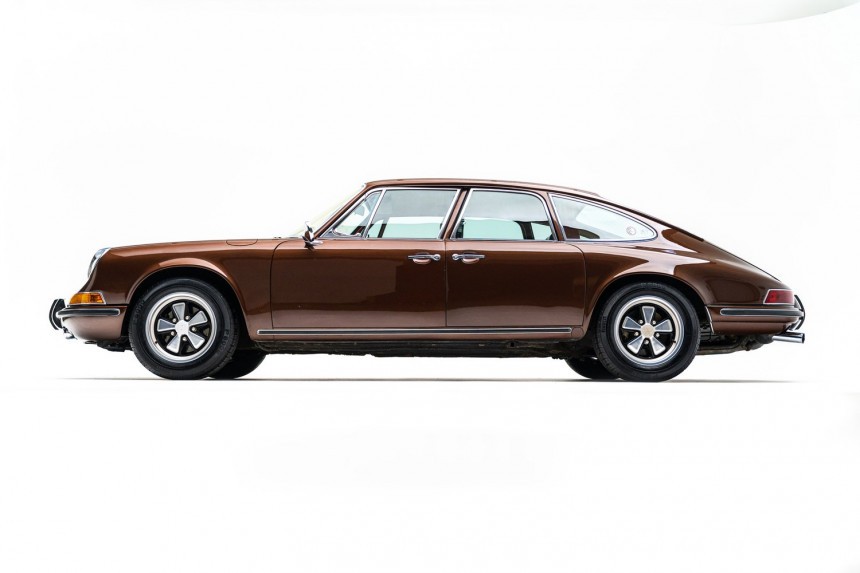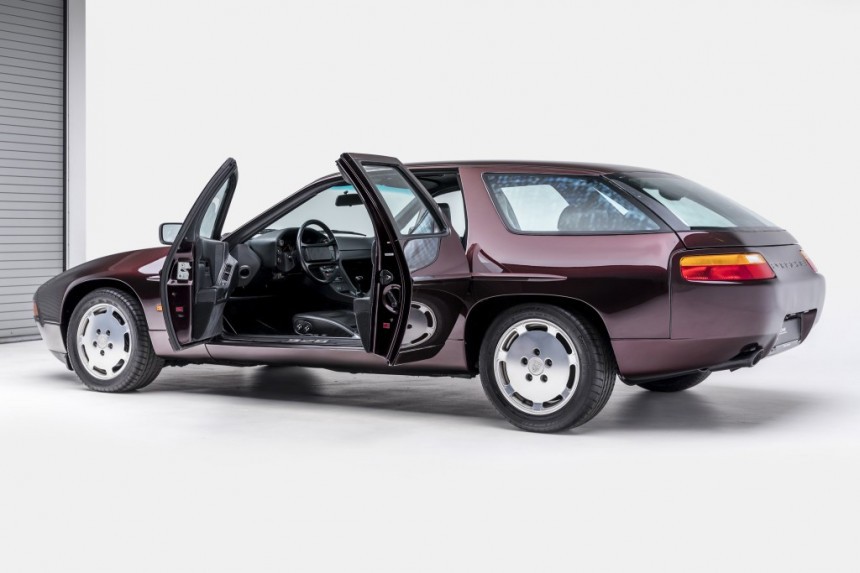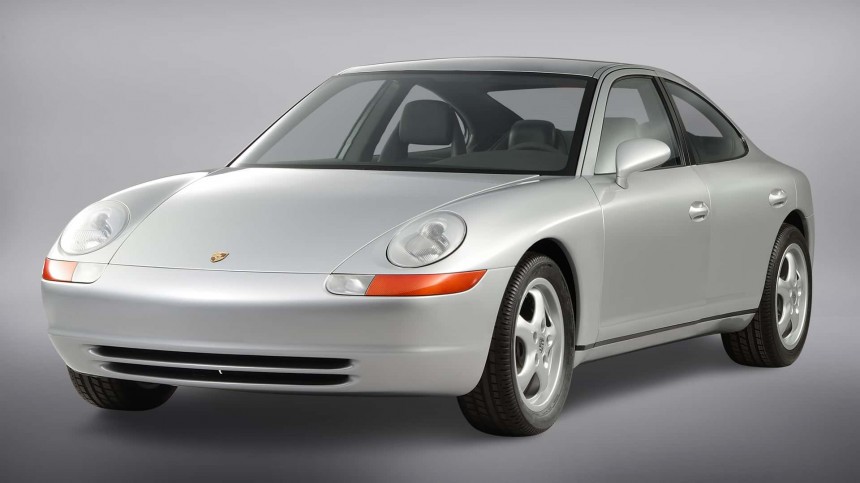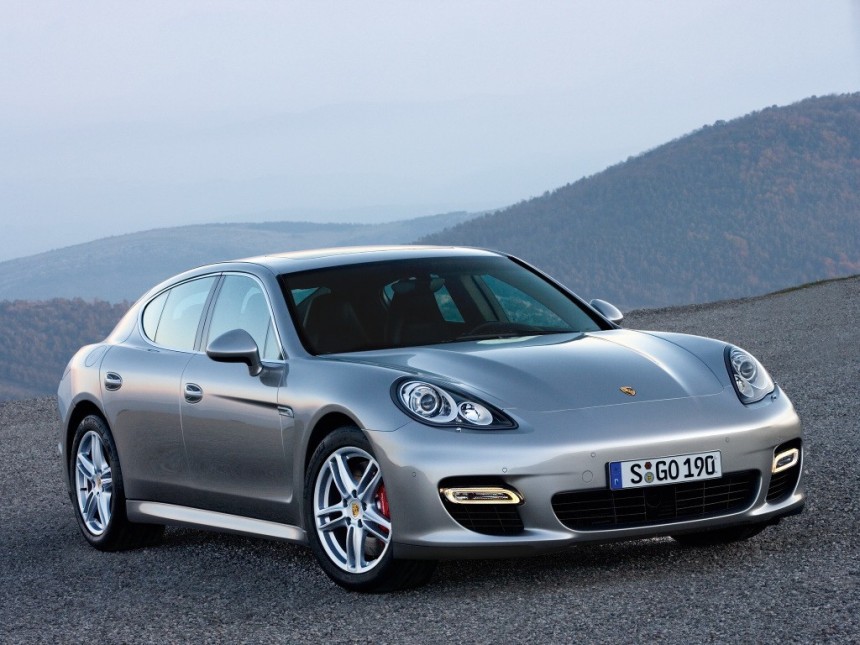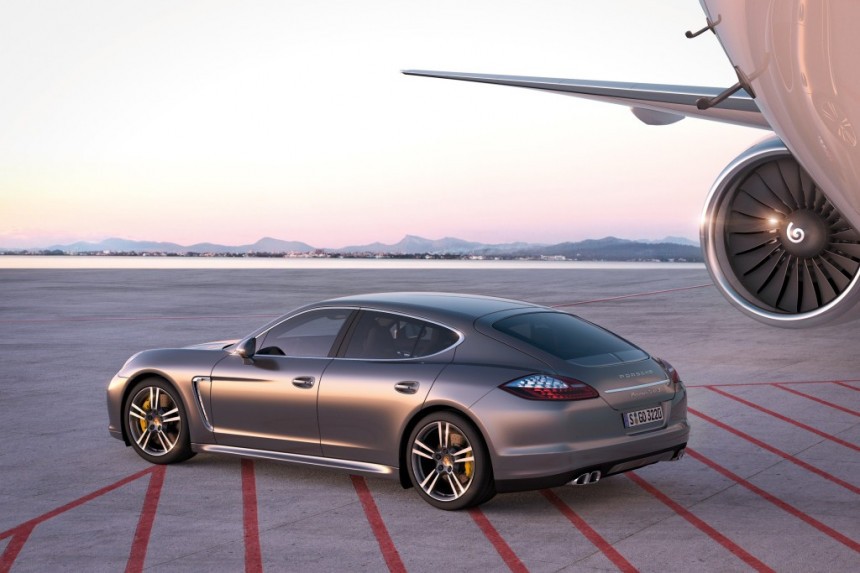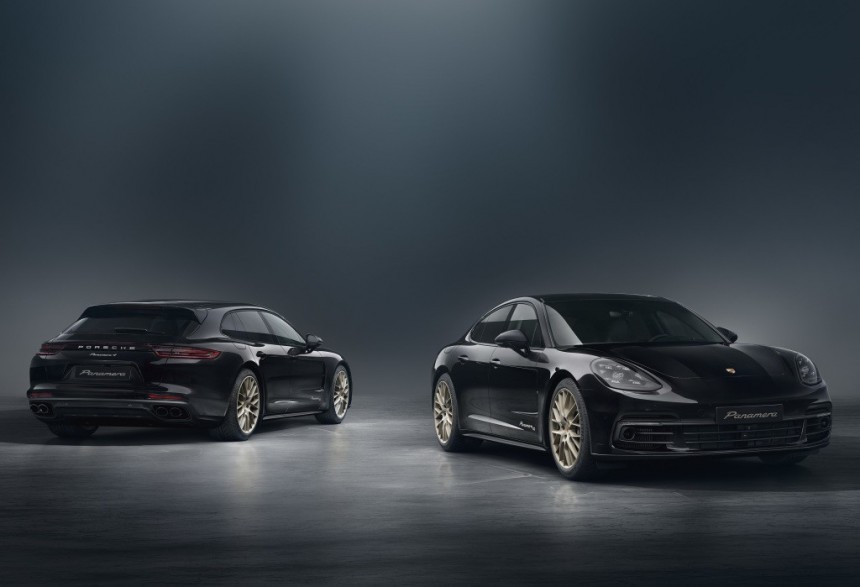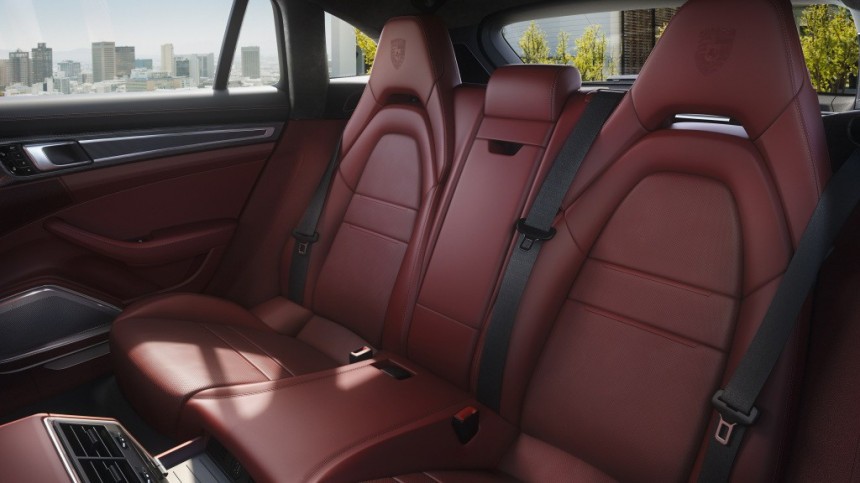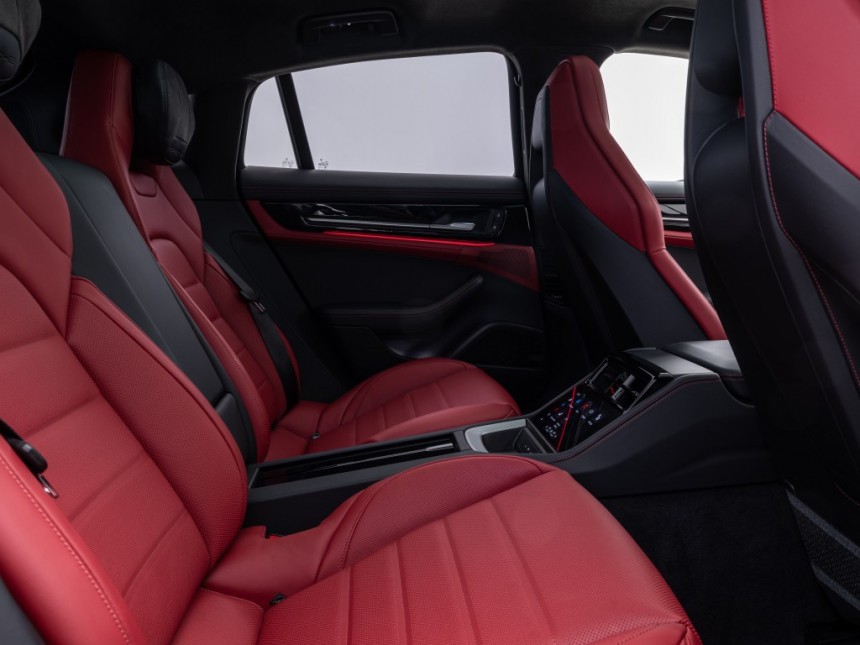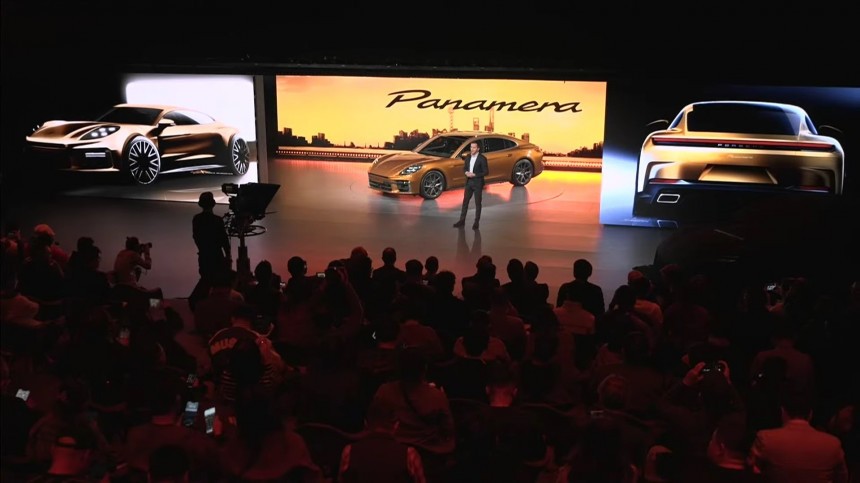Once a staple in the automotive industry, the three-box configuration is an increasingly endangered species, especially in the United States. Everybody and their dog is getting on the sport utility vehicle and pickup truck bandwagons to the detriment of sedans, wagons, and hatchbacks, a shift in preferences with crystal-clear effects for almost every automaker.
Even so, Porsche refused to kill off the slowest-selling model in the German automaker's lineup for something more appealing. Think Macan and Cayenne, sport utility vehicles that bolster the company's financial position, crossovers that allow Porsche to continue building the long-running 911. Why does Zuffenhausen believe in the Panamera so much?
Why did Porsche even bother designing a sedan in the first place? There are many correct answers to these questions, but at the end of the day, remember that Porsche doesn’t run with the pack. The Auto Union racing cars from the 1930s and the Volkswagen Beetle come to mind as trailblazers in their own unique ways, together with the 356 of Ferry Porsche and the 911 of Butzi. What boggles the mind is that Porsche's first sedan concept – the 542 commissioned by Studebaker – came before the Neunelfer.
A whopping 56 years after Studebaker backed out of the 542 project, the Panamera made its debut at the 2009 Shanghai Motor Show in the People's Republic of China. Before going over the history of the German marque's first series-production sedan, we should take a look at the cars that paved the way for the Panamera. As mentioned earlier, we'll kick off this story with the Porsche 542 from the 1950s.
Essentially a 356 with a longer wheelbase and larger doors, the 530 design proposal didn't impress South Bend's one and only Studebaker. However, a fateful meeting between Ferry Porsche and Studebaker executives resulted in the 542. The oh-so-American 542 came in air-cooled and water-cooled guises.
The 3.0-liter V6 engines in question were referred to as 542L and 542W. Mounted up front rather than in the rear, the wide-angled sixers were mated to a three-speed Automatic Drive transmission developed by Studebaker and BorgWarner. Regarding the V angle, make that 120 degrees between the cylinder banks, just like the Ferrari 296 and McLaren Artura plug-in hybrid supercars. As opposed to every Studebaker from that era, the 542 was a unibody with independent suspension for all four corners.
Financial difficulties forced Studebaker to pull out of the improbable partnership, and even after the merger with Packard, the cash-strapped manufacturer couldn't make a case for this fellow. All three prototypes were destroyed, leaving nothing more than sketches, technical drawings, and photographs of the four-door sedan. Over at Studebaker, the Porsche 543 bore the internal codename Z-87.
Based on a 1967 model year 911 S, the so-called Troutman & Barnes was built in 1968 by… uhm… a shop called Troutman & Barnes. Masterminded by Texas-area Porsche and Volkswagen distributor William Dick, the four-door sports car boasts a 108-inch wheelbase. In other words, that would be 2,743 millimeters in metric vernacular. For reference, the 992-generation 911 measures 2,450 millimeters or 96.4 inches, whereas the 2024 Porsche Panamera is listed with 2,950 millimeters or 116.1 inches.
The rear doors were sourced from a different Neunelfer, whereas the roof and B pillars were fabricated by Dick Troutman and Tom Barnes. Gifted with a wood floor for the cargo area behind the rear seats, as well as walnut on the dashboard, the 911 S further sweetens the deal with power windows and the Porsche Sportomatic semi-automatic gearbox.
Developed in collaboration with Fichtel & Sachs, the Sportomatic employs a flywheel-replacing torque converter and a vacuum-operated clutch. The Sportomatic was eventually replaced by the Tiptronic (starting with the 964-generation 911), and the Tiptronic's replacement is – of course – the PDK.
Free-breathing V8 up front? Check! Two pedals instead of three? Check! Four doors and a hatchback-style trunk? Once again, check! More of a shooting brake than a liftback sedan, the V8-powered H50 design study was publicly revealed by Porsche in 2012.
Finished in 1987, the H50 was denied a chance at series production due to poor structural rigidity. Then again, the long-wheelbase H50 does weigh more than the already ponderous 928. To whom it may concern, the 1977 Porsche 928 tips the scales at 1,450 kilos (3,197 pounds). The 1977 Porsche 911 S Coupe, by comparison, weighs 1,120 kilos (2,469 pounds).
The Studie H50 shouldn't be viewed as a failure, though, because Zuffenhausen's favorite son learned a valuable lesson for the subsequent Panamera. Nearly two decades before the Panamera entered production in Leipzig, the German automaker experimented with the sedan body style one more time in the form of the front-engined 989 concept.
A four-door sedan with 911 design cues, the 989 is a weird yet interesting mix of 993 and 996. Penned by Ulrich Bez and finalized by Harm Lagaay, this performance-oriented tourer was intended for production as the more practical alternative to the 928. The project sadly lost momentum after Bez left Porsche in 1991. This duo is also credited with the BMW Z1, the quirky little roadster with vertically sliding doors.
The 989 didn't evolve into a production car due to a dramatic slump in sales at Porsche. According to the German company, the 4.2-liter V8 up front cranks out 350 metric ponies, meaning 345 mechanical horsepower. Capable of 279 kilometers per hour (173 miles per hour), the 989 is relatively light for this kind of vehicle at 1,572 kilograms (3,466 pounds). The first-gen Panamera weighs 1,770 kgs (3,902 lbs).
During an era when 928 deliveries totaled in the ballpark of 3,000 examples per annum, the 989 would have been required to move 15,000 units at a considerably higher price than its 2+2 sibling to break even. Development of the 989 ceased in the lattermost part of 1991, and the project was ultimately canned in January 1992. The rear-drive sedan was supposed to hit showrooms in 1995.
Hippity hip hooray, we're finally here! Launched in 2009 with six- and eight-cylinder muscle, the first-generation Panamera carries the internal codename 970. More often referred to as G1, the first generation is regarded as the ugliest Panamera of them all. A glance at its rear end is enough to understand why the 970's design polarizes opinion to this very day.
Revealed with much pomp in April 2009, the Panamera sold 7,741 units in the United States back in 2010. The 911 achieved 5,736 deliveries that year. However, the Panamera never managed to exceed 8,114 deliveries in this part of the world. The boxer-engined sports car moved 12,904 copies in 2015.
In the first instance, the 970 was offered in S, 4S, and Turbo specifications. All pack a 4.8-liter V8, with the twin-turbo version summoning 500 ps (493 hp) and 700 Nm (516 lb-ft) at full chatter. The naturally-aspirated V8 of the S and 4S is rated at 400 ps (395 hp) and 500 Nm (369 lb-ft). Later on, the lineup was bolstered with the likes of the V6-engined Panamera and Panamera 4, a six-pot diesel, the GTS, and even a hybrid with a supercharged V6 lump from Audi.
The 2013 mid-cycle refresh saw the S and 4S switch to a twin-turbo V6 and the introduction of the Panamera S E-Hybrid, the plug-in hybrid successor of the parallel-hybrid Panamera Hybrid. The facelift also saw the Turbo S get bumped up from the original 550 ps (542 hp) to 570 ps (562 hp). An even torquier version of the Turbo S – the Executive – offers 800 Nm (590 lb-ft) at 2,250 to 4,500 rpm.
Executive is Porsche's way of saying more legroom for the rear passengers, with the Executive measuring 3,070 millimeters (120.9 inches) between the front and rear axles compared to the Panamera's standard 2,900 millimeters (114.2 inches). The Executive originally retailed at $180,300 or $238,125 adjusted for inflation, which may seem a little uncanny.
Looking at the bigger picture, Porsche is fully entitled to charge top dollar for its least popular model. Similar to how the Purosangue is the Ferrari of SUVs, the Panamera is the Porsche of sedans. There is nothing like it out there in terms of overall package, although one could argue the Mercedes-AMG GT 63 S E Performance 4-Door Coupe is a viable alternative. On the other hand, bear in mind the GT 4-Door Coupe is twinned with the E-Class while the Panamera G2's platform is shared with the Bentley Continental GT and Flying Spur.
The second gen's platform was developed by Porsche for the Panamera specifically, although the Volkswagen Group required Porsche to share the MSB vehicle architecture with Bentley for the Continental GT and Flying Spur. Why? The most straightforward answer is maximized synergies.
There's nothing wrong with the MSB, though. A technically superior architecture compared to its forerunner, the MSB further spawned the J1 electric vehicle platform of the Taycan. By the way, did you know that the Taycan outsold the Panamera in 2022? According to Porsche, global deliveries totaled 34,801 and 34,142 vehicles, respectively. Right above them, the 911 finished third overall (40,410 units). The 718 Boxster and 718 Cayman finished 2022 dead last (18,203 units), and – not surprising anyone – the Macan (86,724) and Cayenne (95,604) sport utility vehicles continue to reign supreme.
A far better-looking car than the G1, the G2 was the first Panamera to feature two body styles. Remember the 928 Studie H50? The Panamera Sport Turismo is the spiritual successor of that design study. Some people – yours truly included – believe that it's even better proportioned than the liftback-style sedan.
The biggest tragedy regarding the Sport Turismo is that it makes up approximately 10 percent of the Panamera's total sales. As a result, Porsche discontinued this body style for the G3 we'll be talking about in a jiffy. Had there been a Panamera Cross Turismo, things might have been different. As ever, the second coming of the Panamera offered six- and eight-cylinder powerplants. The biggest change from the G1 is turbocharging across the board. When it comes to transmission choices, the G2 relies on an eight-speed PDK that shifts much faster than the 7DT of the first generation. The G1 also came with the 8HP automatic from ZF and a six-speed manual.
Advancements in PHEV technology resulted in the most powerful Panamera yet in the guise of the Turbo S E-Hybrid, which launched in 2017 with a ridiculous 680 ps (671 hp) and 850 Nm (627 lb-ft) on deck. The facelift improved to 700 metric ponies or 690 horsepower and 870 Nm or 642 pound-feet of torque between 1,400 and 5,500 revolutions per minute.
The Latin phrase "Veni, Vidi, Vici" is attributed to Julius Caesar after the Roman colossus defeated Pharnaces II of Pontus in the Battle of Zela in just under five hours. Porsche came, saw, and conquered the Nurburgring in July 2020 with the Panamera Turbo, then the quickest series-production vehicle in its class at the German racetrack. Be that as it may, the Mercedes-AMG GT 63 S 4MATIC+ is quicker still.
The recently unveiled G3 has been criticized for being nothing more than a heavily updated G2, and the critics are right. The question is, would you spend millions over millions of euros on the development of a completely new platform intended for a fast sedan that sells worse than the 911? Also worthy of note, Porsche never used "all-new" to describe the revamped Panamera in the press materials for the G3. This goes to show that Porsche is keeping it real.
Easily the best-looking Panamera yet, the 972 series follows in the footsteps of the Neunelfer with evolutionary rather than revolutionary changes. At launch, prospective customers are offered a choice between 2.9-liter V6 and 4.0-liter V8. Four plug-in hybrids are in the offing. The Panamera Turbo E-Hybrid is advertised with 680 ps and 930 Nm, as in 670 horsepower and 685 pound-feet of twist. Down the line, the Panamera Turbo S E-Hybrid is likely to mirror the output numbers of the Cayenne Turbo E-Hybrid (739 ps/729 hp and 950 Nm/700 lb-ft).
Starting at $101,550 in the US, the party piece of the 2024 model year Panamera is the state-of-the-art suspension. As standard, the G3 flaunts dual-chamber air suspension with Porsche's trademark Active Suspension Management system. The two-valve design promises superlative ride quality and dynamic behavior. Rear-axle steering is optionally available, as is Porsche Active Ride suspension.
Exclusive to E-Hybrid versions of the 972 series, Porsche Active Ride features active shock absorbers and an electrically operated hydraulic pump. It "surpasses other suspension concepts in all relevant parameters," or so claims Porsche, which also highlights that PAR keeps the vehicle flat in almost every driving scenario. In a similar fashion to motorcycle riding, Porsche Active Ride enables the go-faster sedan to lean into corners. It also pulls the front end of the Panamera down under acceleration and the rear end under braking.
PAR also increases the vehicle's ride height while stationary for easier access and egress. The interior is undoubtedly inspired by the Taycan. Other pièces de résistance include the HD Matrix LED lighting technology, Porsche InnoDrive with active lane guidance and an intersection assistant, and Remote ParkAssist. Anything else worth mentioning?
Ah, yes! The redesigned Panamera will be assembled in Leipzig, with the first customer vehicles expected to arrive on dealer lots in the spring of 2024. The Panamera is $7,700 pricier than last year's base specification, whereas the Panamera 4 is $10,100 more expensive at $108,550 (including a $1,650 destination fee). Pricing for the Panamera Turbo E Hybrid for the US market remains a mystery for the time being. In Germany, it costs 192,500 euros.
With the Taycan already posing a threat to the Panamera from the standpoint of sales volume, it's only natural to assume that the Panamera will be squeezed out of the lineup. The Taycan's wheelbase is 50 millimeters (2 inches) shorter, which is why an electric take on the Panamera wouldn't make sense.
Looking at the glass half full, Porsche will keep building the boxer-engined 911 for as long as possible. Karl Dums, whose current role at Porsche is that of senior project lead for e-fuels, made it clear that synthetic fuel is key to the Neunelfer's survival. Earlier this year, the EU agreed to exempt vehicles running on e-fuels from the 2035 ban on fossil-fuel passenger vehicles. This exemption opens the door for an e-fuel Panamera, but don't hold your breath.
Why did Porsche even bother designing a sedan in the first place? There are many correct answers to these questions, but at the end of the day, remember that Porsche doesn’t run with the pack. The Auto Union racing cars from the 1930s and the Volkswagen Beetle come to mind as trailblazers in their own unique ways, together with the 356 of Ferry Porsche and the 911 of Butzi. What boggles the mind is that Porsche's first sedan concept – the 542 commissioned by Studebaker – came before the Neunelfer.
A whopping 56 years after Studebaker backed out of the 542 project, the Panamera made its debut at the 2009 Shanghai Motor Show in the People's Republic of China. Before going over the history of the German marque's first series-production sedan, we should take a look at the cars that paved the way for the Panamera. As mentioned earlier, we'll kick off this story with the Porsche 542 from the 1950s.
Porsche 542 (1953)
The 3.0-liter V6 engines in question were referred to as 542L and 542W. Mounted up front rather than in the rear, the wide-angled sixers were mated to a three-speed Automatic Drive transmission developed by Studebaker and BorgWarner. Regarding the V angle, make that 120 degrees between the cylinder banks, just like the Ferrari 296 and McLaren Artura plug-in hybrid supercars. As opposed to every Studebaker from that era, the 542 was a unibody with independent suspension for all four corners.
Financial difficulties forced Studebaker to pull out of the improbable partnership, and even after the merger with Packard, the cash-strapped manufacturer couldn't make a case for this fellow. All three prototypes were destroyed, leaving nothing more than sketches, technical drawings, and photographs of the four-door sedan. Over at Studebaker, the Porsche 543 bore the internal codename Z-87.
Porsche 911 S Troutman & Barnes (1968)
The rear doors were sourced from a different Neunelfer, whereas the roof and B pillars were fabricated by Dick Troutman and Tom Barnes. Gifted with a wood floor for the cargo area behind the rear seats, as well as walnut on the dashboard, the 911 S further sweetens the deal with power windows and the Porsche Sportomatic semi-automatic gearbox.
Developed in collaboration with Fichtel & Sachs, the Sportomatic employs a flywheel-replacing torque converter and a vacuum-operated clutch. The Sportomatic was eventually replaced by the Tiptronic (starting with the 964-generation 911), and the Tiptronic's replacement is – of course – the PDK.
Porsche 928 Studie H50 (1987)
Finished in 1987, the H50 was denied a chance at series production due to poor structural rigidity. Then again, the long-wheelbase H50 does weigh more than the already ponderous 928. To whom it may concern, the 1977 Porsche 928 tips the scales at 1,450 kilos (3,197 pounds). The 1977 Porsche 911 S Coupe, by comparison, weighs 1,120 kilos (2,469 pounds).
The Studie H50 shouldn't be viewed as a failure, though, because Zuffenhausen's favorite son learned a valuable lesson for the subsequent Panamera. Nearly two decades before the Panamera entered production in Leipzig, the German automaker experimented with the sedan body style one more time in the form of the front-engined 989 concept.
Porsche 989 (1991)
The 989 didn't evolve into a production car due to a dramatic slump in sales at Porsche. According to the German company, the 4.2-liter V8 up front cranks out 350 metric ponies, meaning 345 mechanical horsepower. Capable of 279 kilometers per hour (173 miles per hour), the 989 is relatively light for this kind of vehicle at 1,572 kilograms (3,466 pounds). The first-gen Panamera weighs 1,770 kgs (3,902 lbs).
During an era when 928 deliveries totaled in the ballpark of 3,000 examples per annum, the 989 would have been required to move 15,000 units at a considerably higher price than its 2+2 sibling to break even. Development of the 989 ceased in the lattermost part of 1991, and the project was ultimately canned in January 1992. The rear-drive sedan was supposed to hit showrooms in 1995.
Panamera G1 (2009–2016)
Revealed with much pomp in April 2009, the Panamera sold 7,741 units in the United States back in 2010. The 911 achieved 5,736 deliveries that year. However, the Panamera never managed to exceed 8,114 deliveries in this part of the world. The boxer-engined sports car moved 12,904 copies in 2015.
In the first instance, the 970 was offered in S, 4S, and Turbo specifications. All pack a 4.8-liter V8, with the twin-turbo version summoning 500 ps (493 hp) and 700 Nm (516 lb-ft) at full chatter. The naturally-aspirated V8 of the S and 4S is rated at 400 ps (395 hp) and 500 Nm (369 lb-ft). Later on, the lineup was bolstered with the likes of the V6-engined Panamera and Panamera 4, a six-pot diesel, the GTS, and even a hybrid with a supercharged V6 lump from Audi.
Executive is Porsche's way of saying more legroom for the rear passengers, with the Executive measuring 3,070 millimeters (120.9 inches) between the front and rear axles compared to the Panamera's standard 2,900 millimeters (114.2 inches). The Executive originally retailed at $180,300 or $238,125 adjusted for inflation, which may seem a little uncanny.
Looking at the bigger picture, Porsche is fully entitled to charge top dollar for its least popular model. Similar to how the Purosangue is the Ferrari of SUVs, the Panamera is the Porsche of sedans. There is nothing like it out there in terms of overall package, although one could argue the Mercedes-AMG GT 63 S E Performance 4-Door Coupe is a viable alternative. On the other hand, bear in mind the GT 4-Door Coupe is twinned with the E-Class while the Panamera G2's platform is shared with the Bentley Continental GT and Flying Spur.
Panamera G2 (2016–2023)
There's nothing wrong with the MSB, though. A technically superior architecture compared to its forerunner, the MSB further spawned the J1 electric vehicle platform of the Taycan. By the way, did you know that the Taycan outsold the Panamera in 2022? According to Porsche, global deliveries totaled 34,801 and 34,142 vehicles, respectively. Right above them, the 911 finished third overall (40,410 units). The 718 Boxster and 718 Cayman finished 2022 dead last (18,203 units), and – not surprising anyone – the Macan (86,724) and Cayenne (95,604) sport utility vehicles continue to reign supreme.
A far better-looking car than the G1, the G2 was the first Panamera to feature two body styles. Remember the 928 Studie H50? The Panamera Sport Turismo is the spiritual successor of that design study. Some people – yours truly included – believe that it's even better proportioned than the liftback-style sedan.
Advancements in PHEV technology resulted in the most powerful Panamera yet in the guise of the Turbo S E-Hybrid, which launched in 2017 with a ridiculous 680 ps (671 hp) and 850 Nm (627 lb-ft) on deck. The facelift improved to 700 metric ponies or 690 horsepower and 870 Nm or 642 pound-feet of torque between 1,400 and 5,500 revolutions per minute.
The Latin phrase "Veni, Vidi, Vici" is attributed to Julius Caesar after the Roman colossus defeated Pharnaces II of Pontus in the Battle of Zela in just under five hours. Porsche came, saw, and conquered the Nurburgring in July 2020 with the Panamera Turbo, then the quickest series-production vehicle in its class at the German racetrack. Be that as it may, the Mercedes-AMG GT 63 S 4MATIC+ is quicker still.
Panamera G3 (late 2023 for the 2024 model year)
Easily the best-looking Panamera yet, the 972 series follows in the footsteps of the Neunelfer with evolutionary rather than revolutionary changes. At launch, prospective customers are offered a choice between 2.9-liter V6 and 4.0-liter V8. Four plug-in hybrids are in the offing. The Panamera Turbo E-Hybrid is advertised with 680 ps and 930 Nm, as in 670 horsepower and 685 pound-feet of twist. Down the line, the Panamera Turbo S E-Hybrid is likely to mirror the output numbers of the Cayenne Turbo E-Hybrid (739 ps/729 hp and 950 Nm/700 lb-ft).
Starting at $101,550 in the US, the party piece of the 2024 model year Panamera is the state-of-the-art suspension. As standard, the G3 flaunts dual-chamber air suspension with Porsche's trademark Active Suspension Management system. The two-valve design promises superlative ride quality and dynamic behavior. Rear-axle steering is optionally available, as is Porsche Active Ride suspension.
PAR also increases the vehicle's ride height while stationary for easier access and egress. The interior is undoubtedly inspired by the Taycan. Other pièces de résistance include the HD Matrix LED lighting technology, Porsche InnoDrive with active lane guidance and an intersection assistant, and Remote ParkAssist. Anything else worth mentioning?
Ah, yes! The redesigned Panamera will be assembled in Leipzig, with the first customer vehicles expected to arrive on dealer lots in the spring of 2024. The Panamera is $7,700 pricier than last year's base specification, whereas the Panamera 4 is $10,100 more expensive at $108,550 (including a $1,650 destination fee). Pricing for the Panamera Turbo E Hybrid for the US market remains a mystery for the time being. In Germany, it costs 192,500 euros.
What's next after the Panamera G3?
Porsche's first mass-produced sedan is living on borrowed time. The G3 should have a seven-year life cycle, meaning that Porsche may discontinue the Panamera in 2031. Rather than historically low sales, the reason for the Panamera's discontinuation is fuel economy and emission regulations. The Netherlands and Greece, for example, will ban the sale of new passenger vehicles powered by fossil fuels by 2030.With the Taycan already posing a threat to the Panamera from the standpoint of sales volume, it's only natural to assume that the Panamera will be squeezed out of the lineup. The Taycan's wheelbase is 50 millimeters (2 inches) shorter, which is why an electric take on the Panamera wouldn't make sense.
Looking at the glass half full, Porsche will keep building the boxer-engined 911 for as long as possible. Karl Dums, whose current role at Porsche is that of senior project lead for e-fuels, made it clear that synthetic fuel is key to the Neunelfer's survival. Earlier this year, the EU agreed to exempt vehicles running on e-fuels from the 2035 ban on fossil-fuel passenger vehicles. This exemption opens the door for an e-fuel Panamera, but don't hold your breath.
